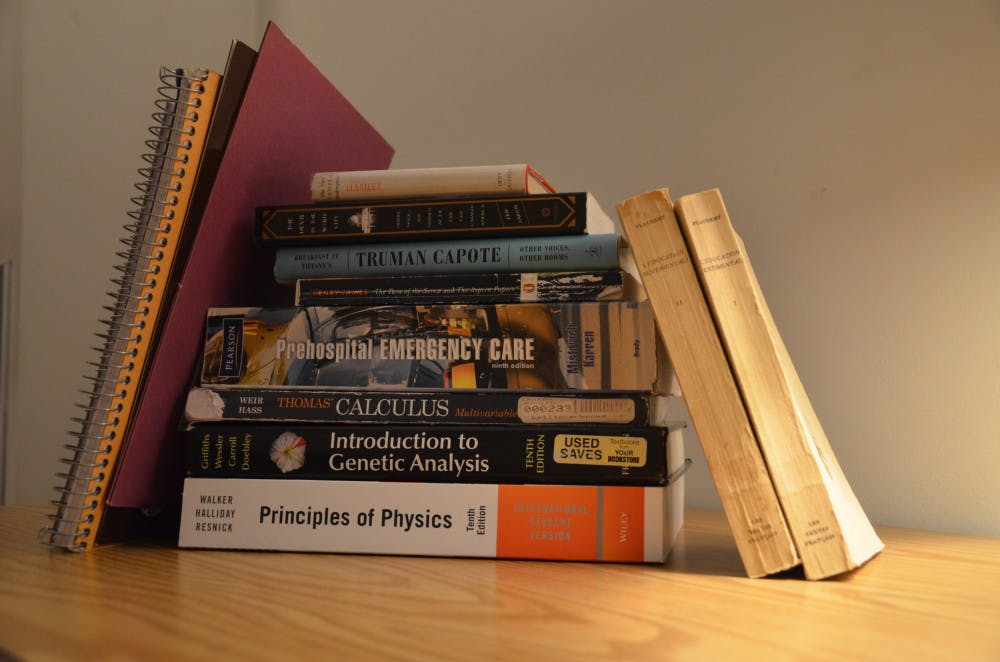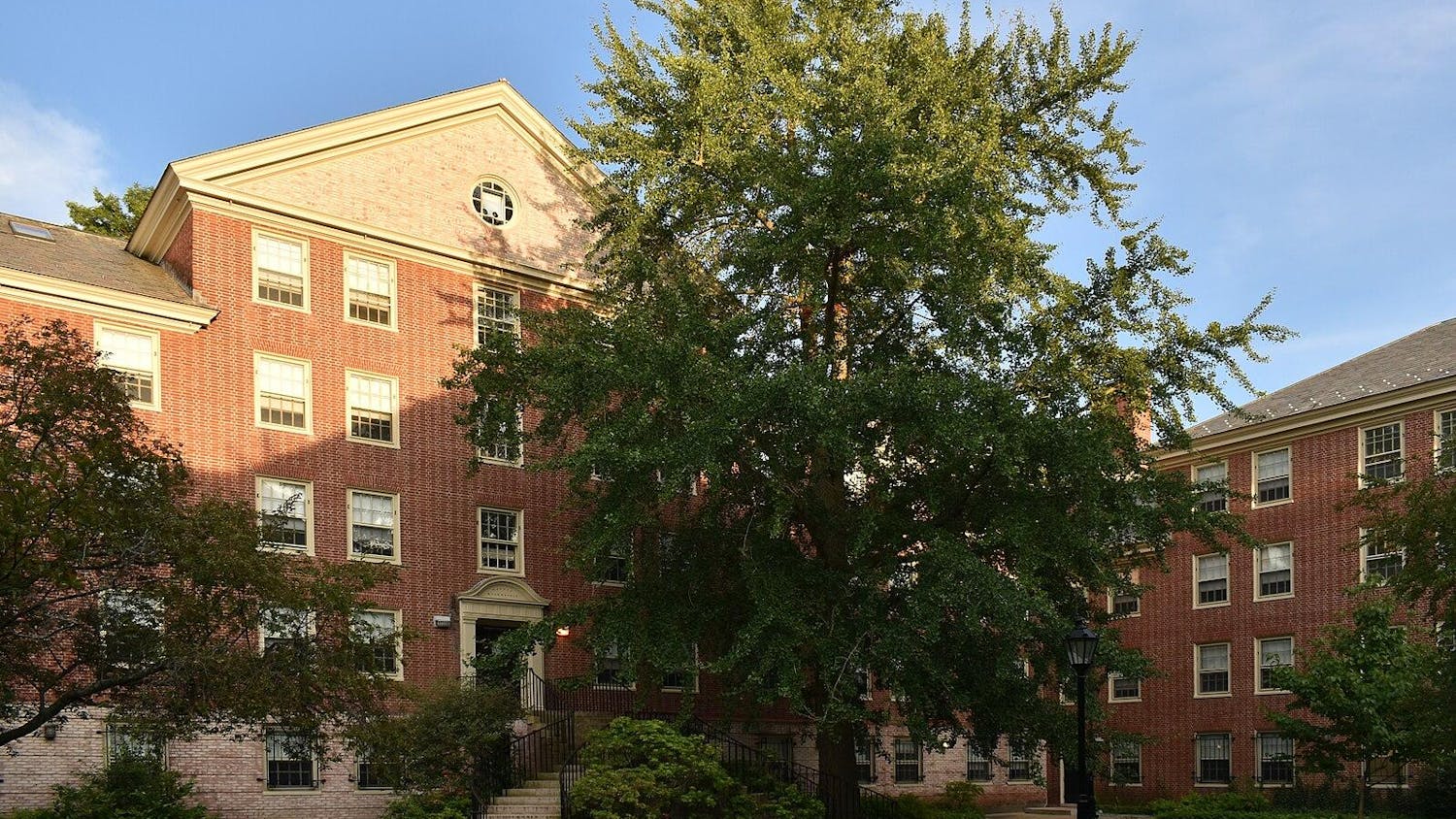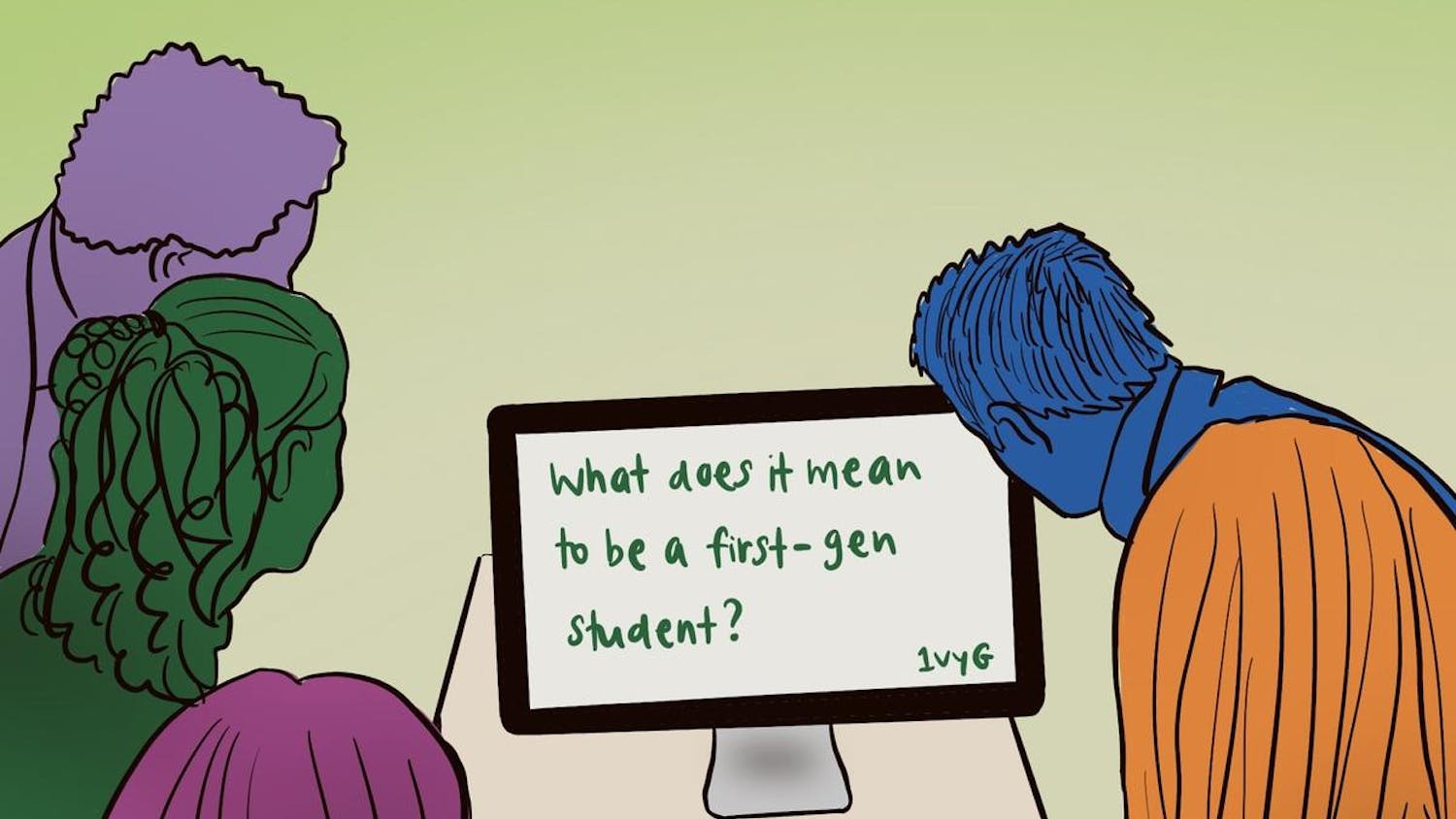As students select their courses this fall, they must also foot a hefty bill for books.
The average price a Brown student will pay for new books at the Brown Bookstore this semester is $133 per class, which amounts to $532 for students taking the typical four-course load, according to a Herald analysis of textbook data listed on Banner. For students purchasing used books when available, they can expect to pay about $99 per class for required books.
These costs do not include any other course materials, such as coursepacks from Allegra Printing.
The retail prices of college textbooks have risen more than 1,000 percent over the last four decades, according to the Bureau of Labor Statistics.
Science courses are known for having large, expensive textbooks that often have new editions, but humanities courses can be just as expensive — an $85 biology book, for example, amounts to less than ten $10 William Faulkner novels, said Mike McDade, the bookstore’s textbook department manager.
The Department of Chemistry has the highest average class price at just over $163 for required books at the lowest total purchase price the Bookstore offers, according to The Herald’s analysis, while Italian Studies is second at $149 on average. Applied mathematics, public policy, public health, economics, Hispanic studies, political science and engineering also rank among the most expensive.
And several individual courses have costs three to four times higher than the overall average. TAPS 1230: “Performance Theory and World Theatre History: Paleolithic to Medieval” tops the list at $390 for used books. Used textbooks for a section of CHEM 0330: “Equilibrium, Rate, and Structure” cost $383, while those for POBS 0110: “Intensive Portuguese” run up to $348. And the used books for POLS 1490: “Building a Better World: Film and Social Change,” for which Provost Richard Locke is listed as one of the instructors on Banner, total $309.
“I hate it, because it’s really expensive,” said Marques Love ’17.
“If the textbook is not online or a friend doesn’t have it, I don’t buy it,” said Destiny Torres ’16, adding that a high textbook cost for a course might dissuade her from ultimately taking it.
Many faculty members are aware that buying textbooks can present an obstacle for students and are concerned about the affordability of Brown outside of tuition.
“The only thing you should have to worry about in your courses is the material, not whether or not you can buy the book,” said Rick Bungiro, senior lecturer in molecular microbiology and immunology. “If a student came over and said, ‘Dr. B, I’m having trouble getting that book,’ I would do whatever I could to get the book for them, and if necessary, I would walk them over to the bookstore and buy it.”
“For every kid that comes to me, there are probably five others that don’t,” he added.
Administrators are concerned with textbook affordability and encourage faculty members to keep prices down through conversations with department chairs and other faculty members. “We’ve had various conversations with departments and spoken with faculty about struggling between the costs of materials for the course and the materials they think are best for that course,” said Dean of the College Maud Mandel, adding that the administration is conscious of the cost discrepancy for students in different disciplines.
But rarely does a student pay the full retail price for a textbook, said Steve Souza, director of the Brown Bookstore. The average student today pays 20 percent less than in 2008, he added.
The increased popularity of Amazon, Chegg and other online sources for discounted textbooks has likely contributed to the reduction of student bills. The bookstore also has a special site — brown.verbacompare.com — where students can compare prices with these online retailers.
Many students choose to rent books from the Brown Bookstore, looking for a cheaper alternative to buying or daunted by the prospect of falling behind in their courses while waiting for textbooks to arrive from online retailers. Roughly two-thirds of undergraduates rented at least one book last year, McDade said.
“Rentals have been the saving grace of this industry, because it significantly lowers the cost for students,” Souza said. But there is a certain amount of risk involved with the rental business — publishers are releasing updated textbook editions more frequently than in the past, and the prices of textbooks have risen 6 percent per year over the last 13 years, he added.
“When we first entered the rental business, it tended to be in the big classes, with the expensive textbooks, but it’s moved past that,” Souza said. Working with the bookstore’s suppliers and retaining consistently in-demand books means that most paperbacks are rentable — a result of the bookstore’s efforts to “aggressively grow” the rental program.
Other options gentler on students’ wallets are online readings and occasionally course packets from Allegra Printing. Though they can be pricey, they usually come out to less than purchasing all of the included texts individually.
An Allegra Printing employee declined to reveal how many professors order course packets or the average price of course packets, citing confidentiality concerns.
Some course material can also be found on reserve at libraries, with humanities courses having the largest amount. The libraries do not purchase textbooks, wrote Ned Quist, associate University librarian for research and outreach, in an email to The Herald. “Sometimes faculty members will put a personal copy of their course textbook on reserve, but this is by no means a comprehensive practice.”
Financial aid packages at Brown include a $1,450 allowance for books, ranking the highest among the Ivies by at least $200, said Jim Tilton, director of financial aid. This amount is based on the consumer price index from the Bureau of Labor Statistics, information from the Brown Bookstore and tuition and fee increases, and it has risen steadily over the last few years, Tilton said.
But students still wish there were a fundamentally different system for obtaining course materials. “I don’t need this $200 book for 13 weeks that I might not even use,” Love said.
“I’d really like to see a way for there to be a textbook bank, where … instead of selling their books, people could have them available so people could check them out for a semester,” Bungiro said, adding that it could be institutional, student-run or joint effort.
Spurred by student feedback about financial barriers to buying textbooks and calls for a space that allows for resource sharing, the Undergraduate Council of Students launched brown.texts.com — an online platform that allows Brown students to buy, sell and exchange textbooks directly from each other — last spring.
UCS President Sazzy Gourley ’16 said the platform was designed to create a more efficient system for textbook exchange and to alleviate some of the financial burden of buying textbooks. UCS is currently working to get more students to create free accounts, so that it can be “a thriving online space,” he said.
“It’s not a question of the administration and faculty not caring. It’s that we haven’t always been aware of the problem in a way that’s made us able to change things,” Bungiro said. “It’s not that we haven’t taken steps, it’s that we don’t necessarily know what those steps should be.”
-With additional reporting by Emma Jerzyk





